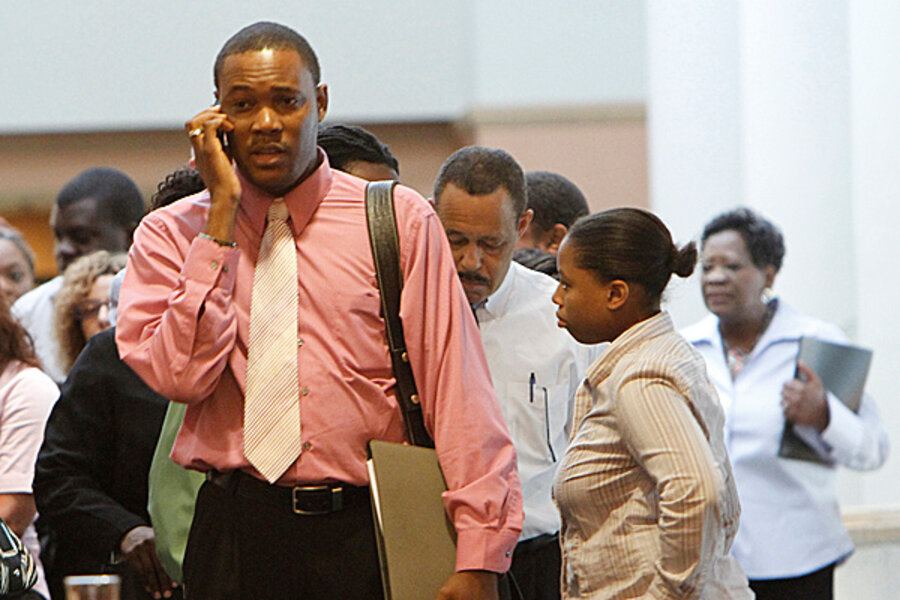US economy adds 290,000 jobs in April as recovery gains traction
Loading...
The US economy added 290,000 jobs last month in a sign that a job-market recovery is gathering strength.
April's job gains come as job numbers for prior months were also revised upward. In all, nonfarm employers have added 573,000 jobs since December, with 483,000 of those coming in the private sector and the rest in government.
"You have more people working more hours, earning higher wages," says Ken Mayland, president of ClearView Economics near Cleveland. "I don't think it will stop here. We're going to continue to cyclically evolve to even greater job creation as this year unfolds."
The Labor Department reported job gains across virtually every sector of the economy in April, from manufacturing to various services.
Still, investors focused Friday on concerns beyond the positive labor news. Stock markets skidded again in the morning, amid concerns about a European debt crisis, the uncertain outcome of British elections, and trading glitches that caused an enormous gyration in share prices Thursday. Investors had also been expecting the pickup in jobs, although the gains exceeded forecasts.
Forecasters also caution that a high rate of unemployment will continue to be a challenge, and some economists worry that the economic recovery could yet face headwinds later this year. The jobless rate ticked upward to 9.9 percent in April as more people returned to the labor force to look for jobs. Unemployment was 9.7 percent in March.
But Mr. Mayland sees the job market confirming what he calls the "rubber band theory" of business cycles. The more the economy is stretched downward by a deep recession, the stronger it tends to bounce back, he says.
By contrast, after the much milder recession of 2001, employment gains failed to materialize in the so-called jobless recovery.
Most of the new jobs this year have been added just in the past two months – the 290,000 in April plus a revised figure for March of 230,000.
In April, the manufacturing sector added 44,000 jobs, while the addition of short-term Census workers pushed up government payrolls by more than 59,000.
The private service sector, which accounts for most employment, gained 166,000 jobs. Only 26,000 of those were temporary positions (lower than in other recent months), a sign that more businesses feel confident about permanent hiring.
Those figures all come from a survey of employers. Another part of the Labor Department's monthly report is based on the "household survey" of individual workers.
"The household figures, which may be more cutting edge around important turning points, showed even bigger gains" in employment than the survey of business establishments, Mayland says. The household survey showed 550,000 more Americans employed in April than in March.
The optimistic scenario is that job growth boosts consumer spending, which raises business confidence and spawns still more hiring in a self-reinforcing recovery.
Offsetting this positive cycle, however, are several worries. Households still have high debt, and home values in many markets remain well below their 2006 levels. Rising government debt – in America as well as other nations like Greece – has created concerns that taxes may rise in 2011 and beyond.
Some 15.3 million Americans are officially unemployed as of April. Moreover, the unemployment rate is even higher – 17.1 percent – if the measure includes people "marginally attached" to the labor force and people working part time because they can't find full-time work.
It will require job gains of roughly 3 million per year, and economic growth above 3 percent a year, to bring unemployment down to 6 percent by 2013, according to estimates by Peter Morici, a University of Maryland economist. His analysis includes both those now unemployed and the people entering the labor force for the first time each year.
Related:





